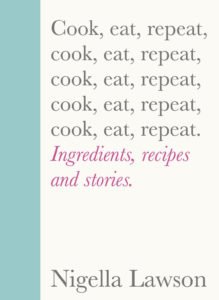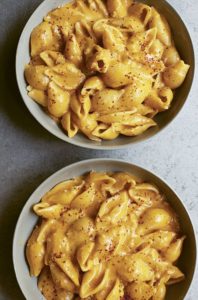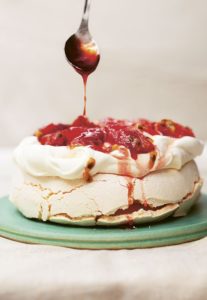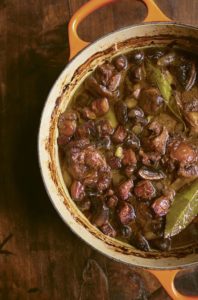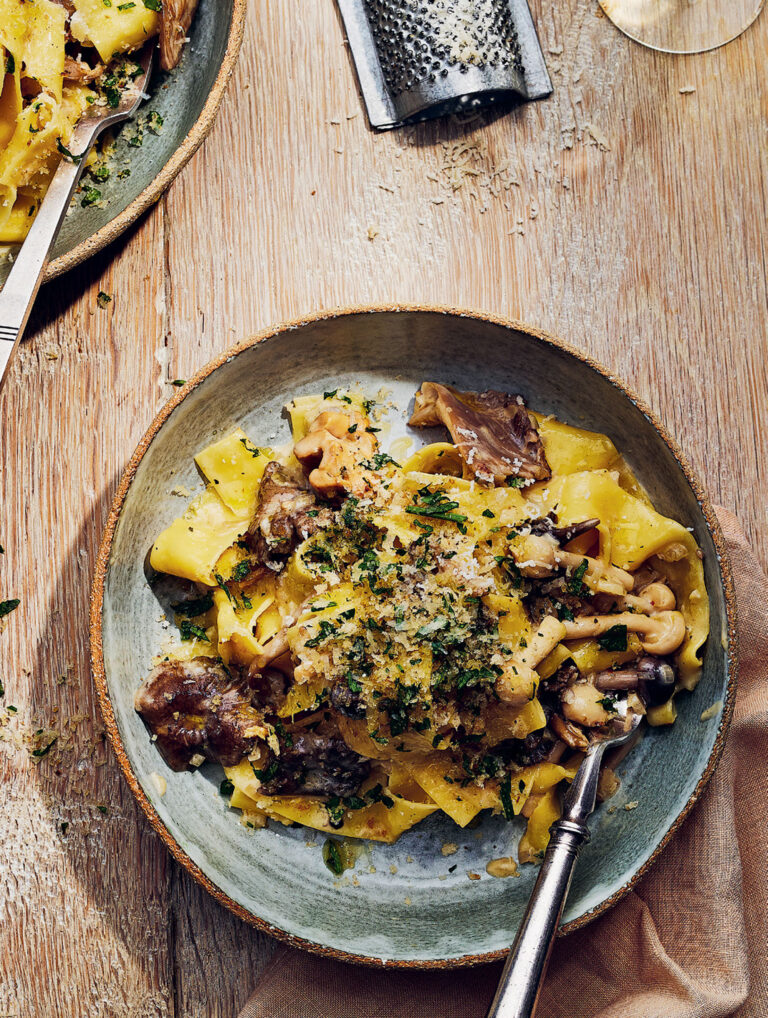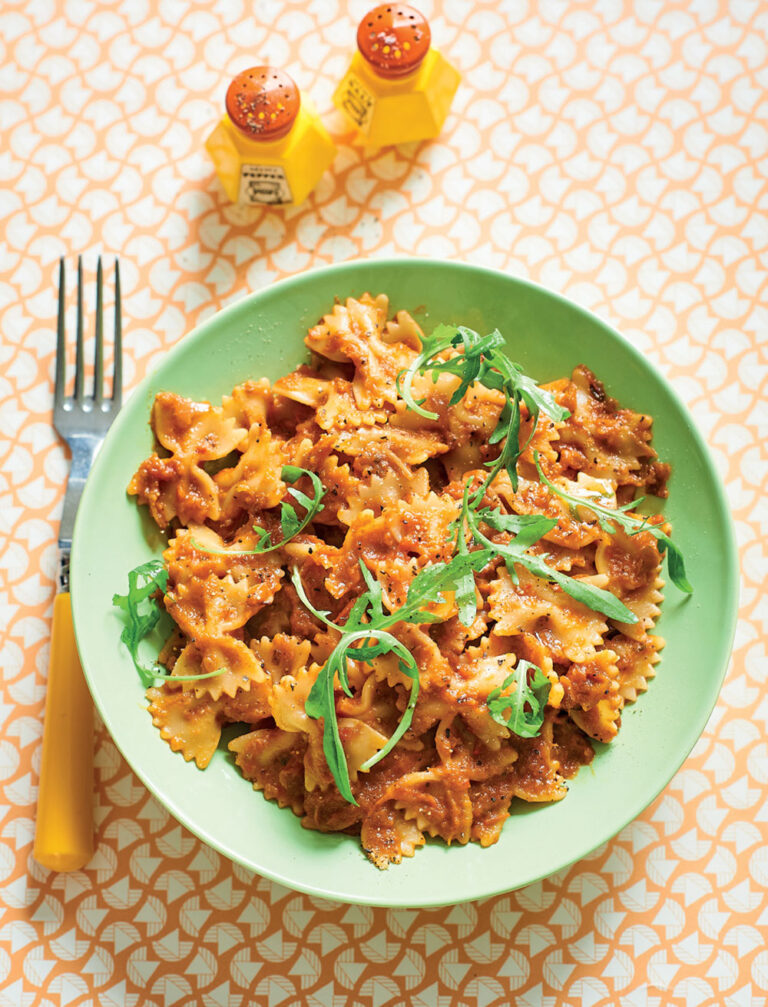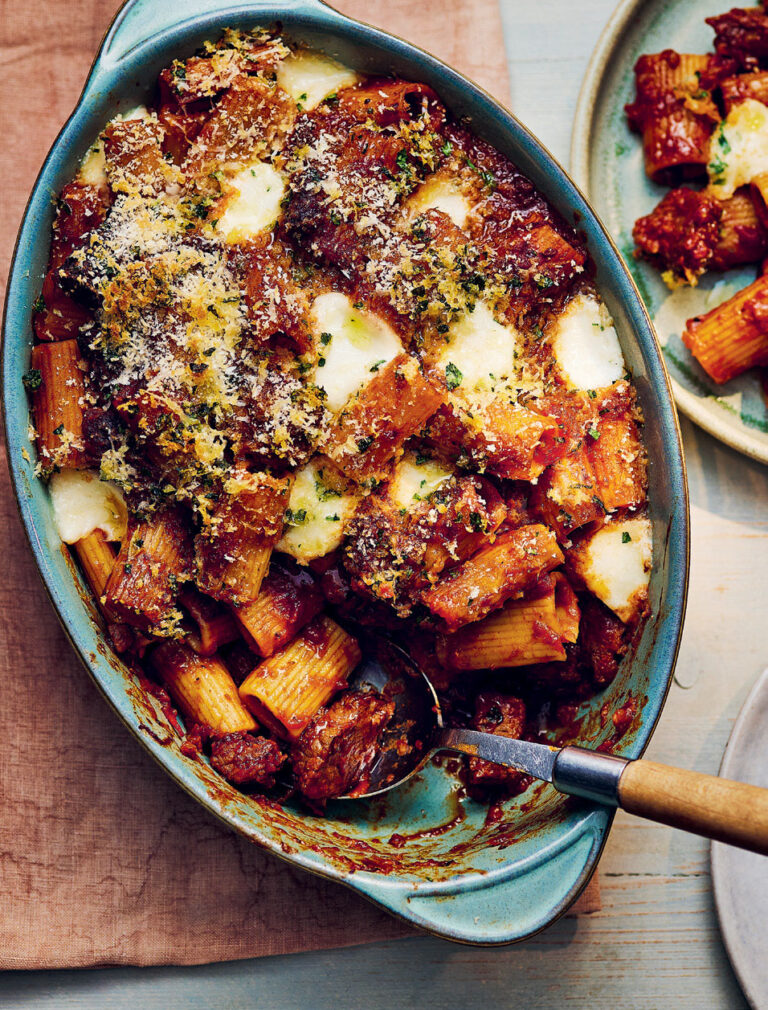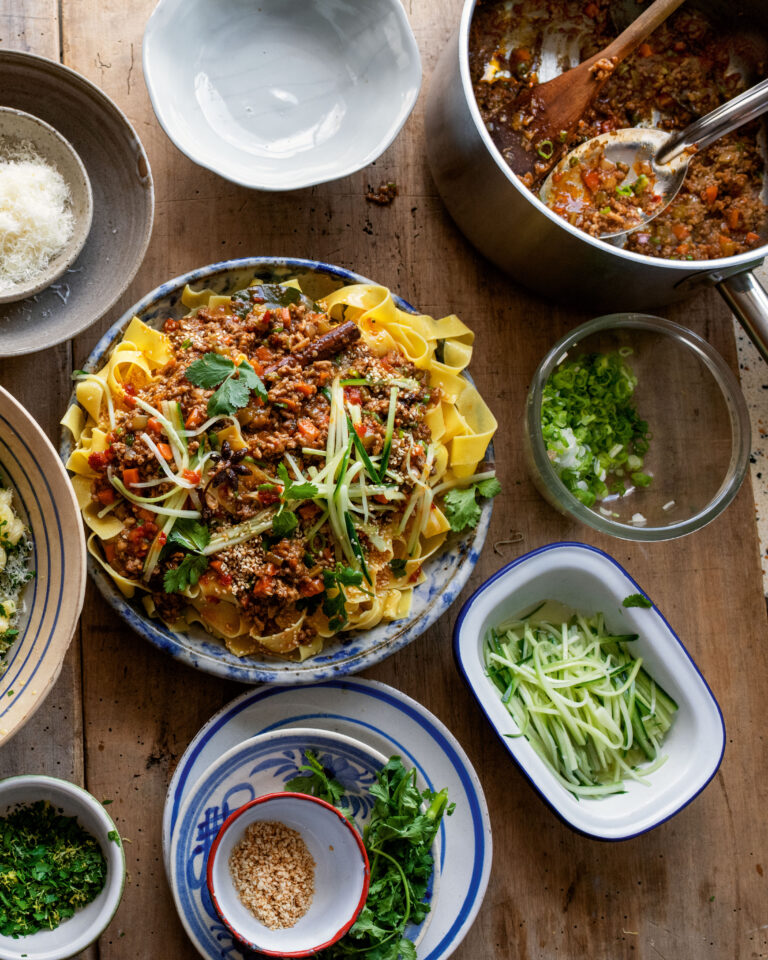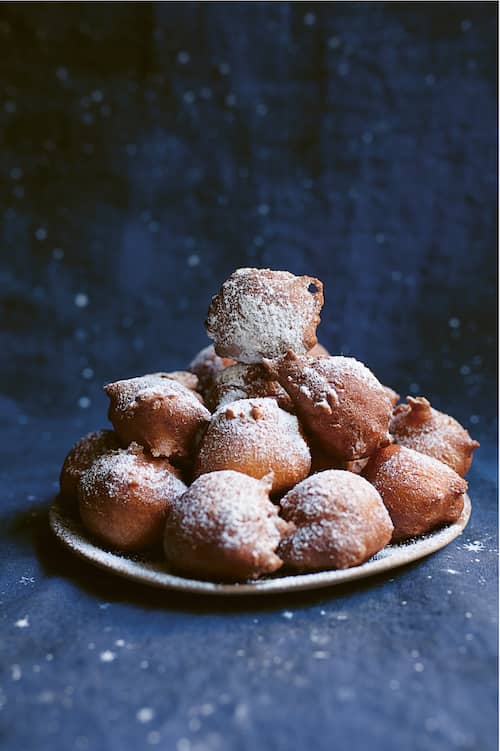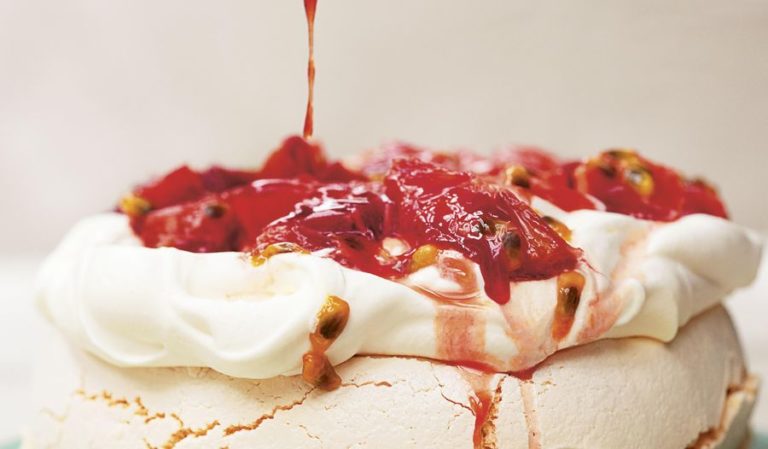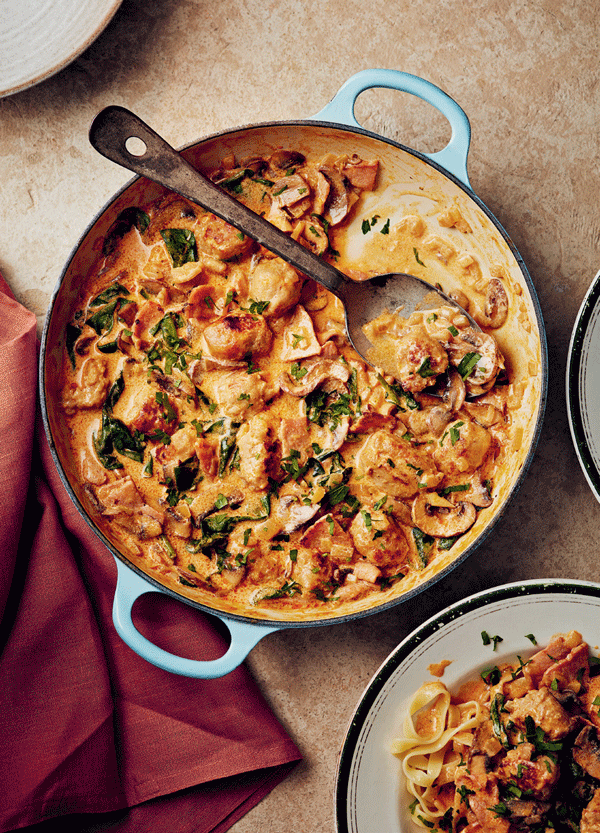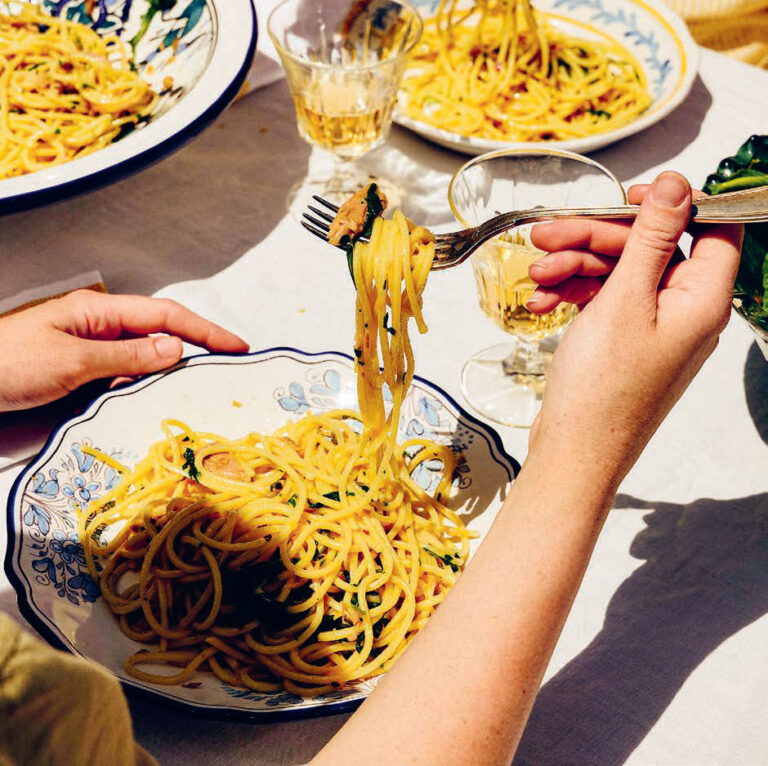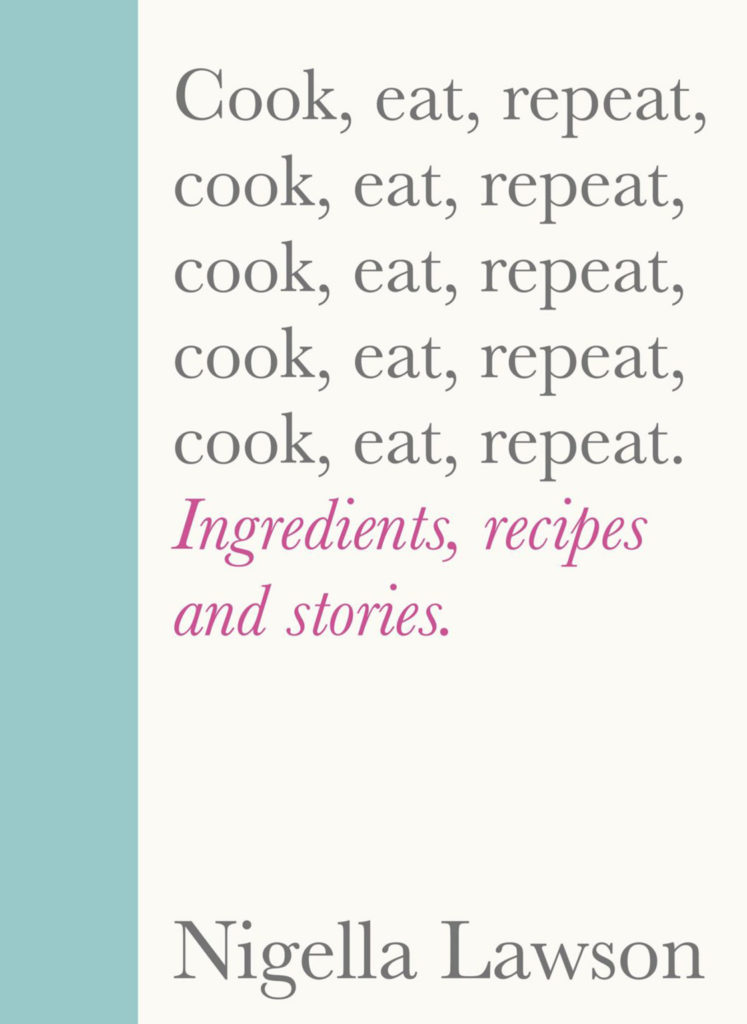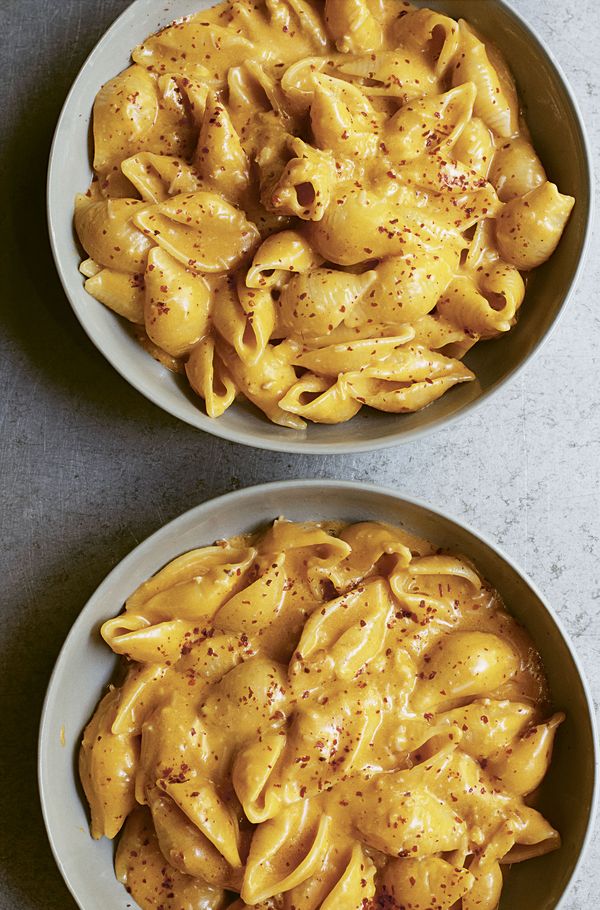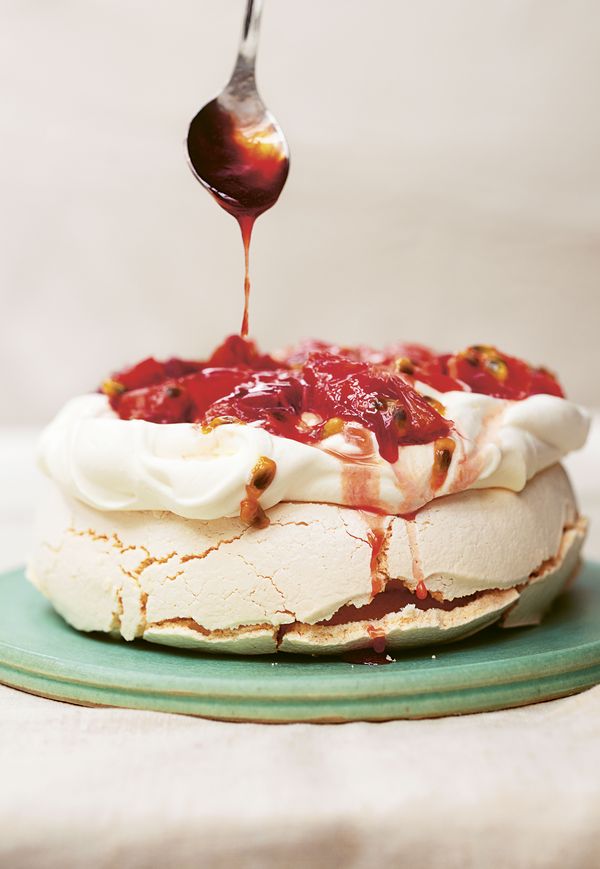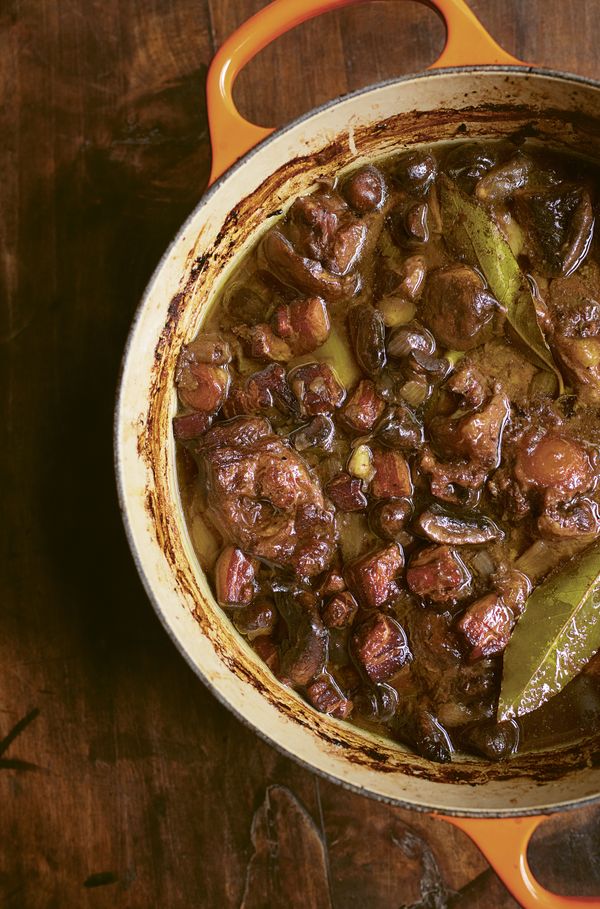Nigella Lawson’s Pappardelle with Cavolo Nero and ‘Nduja
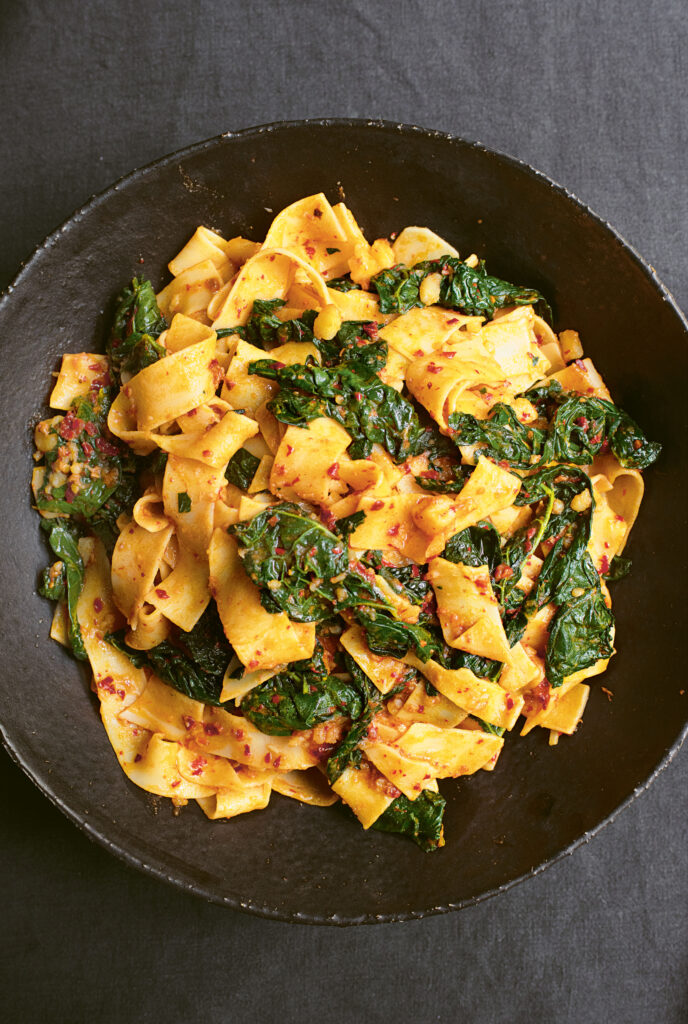
As seen on her BBC2 series, Cook, Eat, Repeat, Nigella's quick and easy pasta features cavolo nero and 'nduja and can easily be adapted as a meal for one.
From the book
Buy From
Introduction
This is a gorgeous, wintry, rib-sticker of a dish, just right to bolster and brighten where skies are dark and the air is chill. If you haven’t come across ’nduja before (pronounced en-doo-ya, with the ‘en’ mumbled, and the stress on the ‘doo’), I can best describe it as being like a fabulously fiery salami pâté, or a chorizo-ish spread (I can only imagine that ’nduja is a Calabrian rendition of the French andouille), and once you start cooking with it, you won’t be able to stop. I always use the ’nduja that you buy cut into soft slabs, but it works just as well with the ’nduja paste that comes in a jar; it has perhaps a slightly more bitter edge, but you hardly notice that given its intense heat. Add it to anything – a bowl of chickpeas, a pan of mussels, a chicken stew – when you want to bring smokiness and heat; or, just eat it as it is, spread on toast. Here, it binds with the potato to make a fuzzy, buttery sauce to coat the thick pasta and minerally greens, and although two large pans are involved, very little work is required of you.
If you can’t find ’nduja, or are vegetarian, then do use harissa in its stead, though you probably won’t need more than a tablespoon or two, and I’d add a generous handful of halved cherry tomatoes, frying them in the butter until they give up some of their gloop; should you be vegan, use 60ml of olive oil in place of the butter.
If it’s a solo supper you’re after, I suggest you generously divide everything by 5, give or take; use a tablespoon of butter and a larger potato, by all means. And you don’t have to use pappardelle: I recently made this with fusilloni – comically giant fusilli – and the sturdy spiral shapes were a perfect foil for the full-bodied ’nduja sauce.
Ingredients
| 1 | large floury potato, such as Rooster (approx. 300g) |
| 500g | cavolo nero or other kale or dark leafy greens |
| 500g | pappardelle (preferably not egg pappardelle) |
| 60g | unsalted butter |
| 150g | ’nduja (see recipe intro) |
| 3 x 15ml tbsp | extra-virgin olive oil, plus more to serve |
Method
Fill a large pan with cold water, and add salt with abandon.
Peel the potato (as you want to help it break down a little as it cooks with the pasta) and cut it into 1cm cubes, then add these to the pan of salted water and bring to a boil.
Meanwhile, pull the leaves off the stalks of the cavolo nero, tear them into smaller pieces, and leave in a colander for now.
Once the water in the pan has come to a boil, cook the potato cubes for 10 minutes, and then add the pappardelle; I don’t use egg pappardelle, but the sturdier durum wheat kind, which take around 7 minutes to cook; if you have only the finer egg pappardelle, which take about half the time, add the cavolo nero to the water first. Give the pappardelle a good stir, and once the water has reached boiling point again, add the cavolo nero.
Set your timer for just under the recommended cooking time on your packet of pasta, though start checking before that, and get on with the sauce. I use something called a stir-fry pan for this, which looks like a large wok, really. You need a pan that’s big enough to take all the ingredients later, and with room to toss the pasta comfortably. Melt the butter gently in your pan of choice, and then, over low to medium heat, add the soft, squidgy, spicy ’nduja and stir it into the butter to make a sauce.
When the pasta’s nearly ready, scoop out a cupful of pasta cooking water, and then add about 3–4 tablespoons to the buttery ’nduja, and stir it in.
Then, once the pasta is done and the cavolo nero soft, drain both and tip into the ’nduja pan. It doesn’t matter if the pappardelle and greens are wet; you will just have to add less water later.
Turn everything together carefully, as your pan will be very full indeed, and add more of the pasta-cooking water as needed to help emulsify the sauce.
Pour over the extra-virgin olive oil, and toss again, adding more if wished, and serve immediately. Bring the bottle to the table, to pour, greenly and greedily, over your pasta as you eat.
Store – Refrigerate leftovers, covered, for up to 3 days. Reheat in microwave or saucepan, adding extra water if needed, until piping hot. Pasta will soften on reheating.
Reviews
2 Ratings
Have you tried this recipe? Let us know how it went by leaving a comment below.
Thank you for your rating. Our team will get back to any queries as soon as possible.
Please note: Moderation is enabled and may delay your comment being posted. There is no need to resubmit your comment. By posting a comment you are agreeing to the website Terms of Use.

